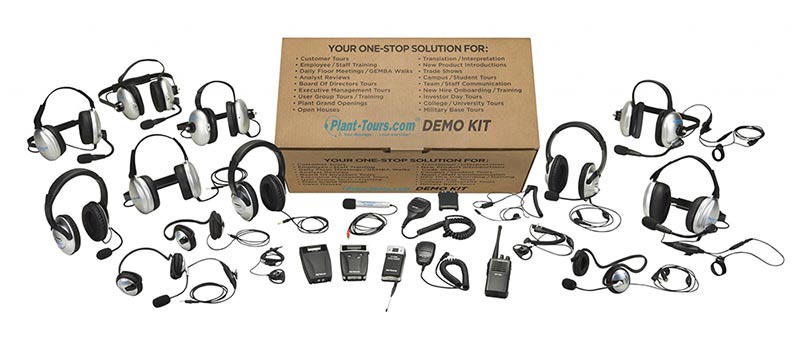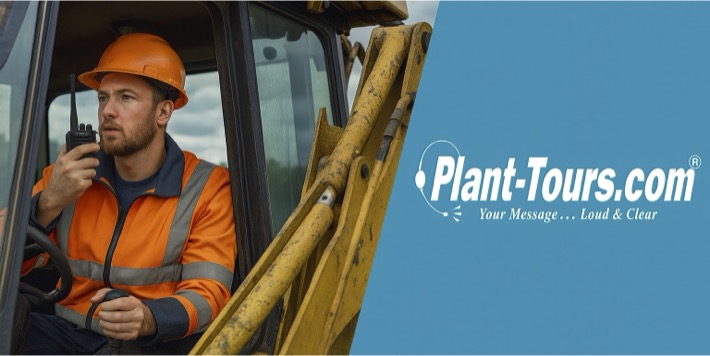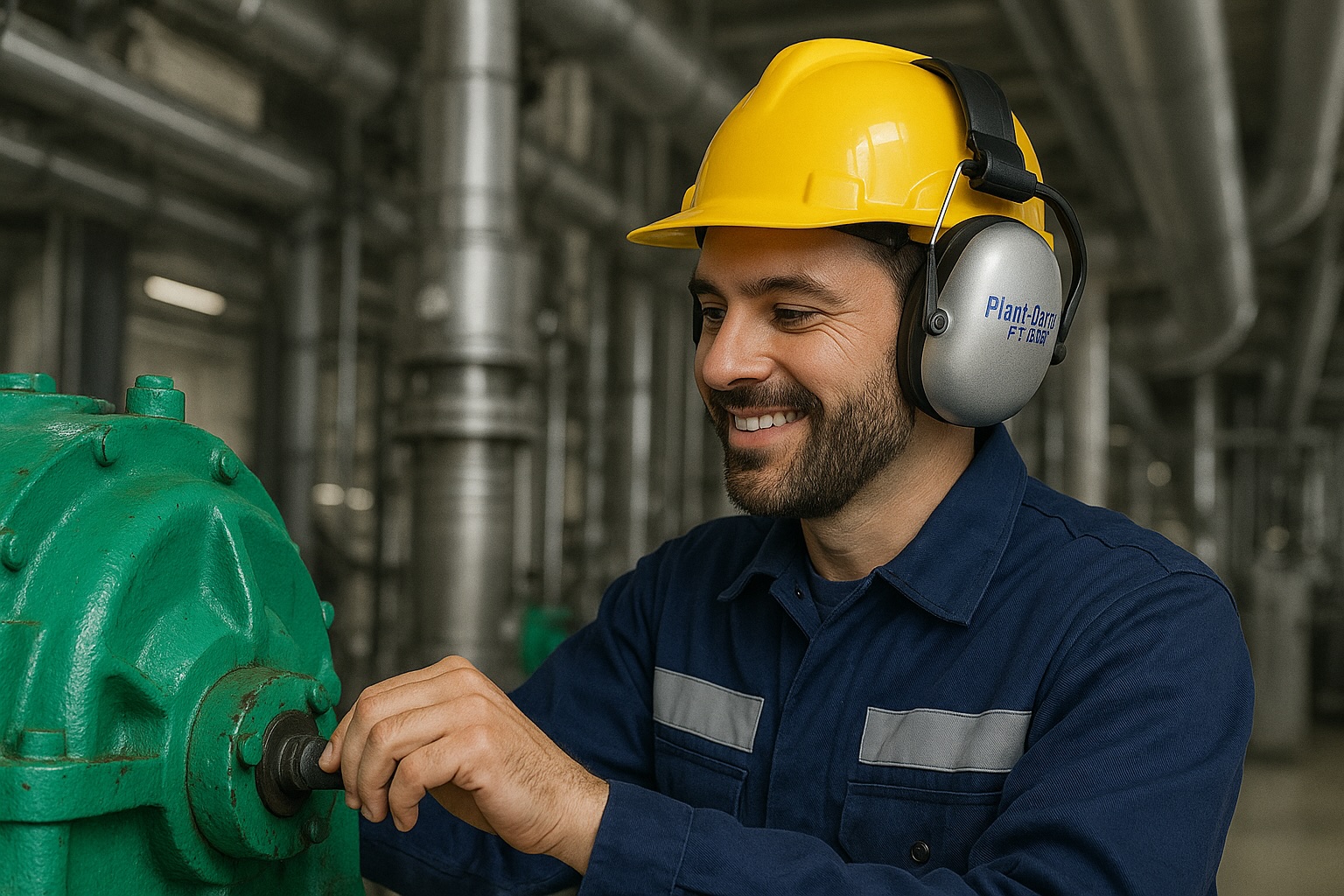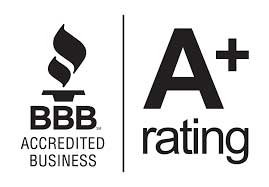The Importance of Hearing Protection in Construction
Construction sites are bustling hubs of activity, filled with the sounds of machinery, tools, and equipment. While these sounds signify progress and productivity, they also pose significant risks to the hearing health of workers. Over time, this continuous exposure to high decibel levels can lead to irreversible hearing damage. At Plant-Tours, we have worked with many construction companies to provide the proper communication equipment in order to protect workers’ hearing. We recently worked with a major construction firm that saw a 30% reduction in hearing-related incidents after implementing our communication systems, emphasizing the importance of hearing protection on busy sites.
Hearing Loss
One of the most significant risks facing construction safety is hearing loss due to prolonged exposure to loud noises. The Occupational Safety and Health Administration (OSHA) defines hazardous noise as exposure to sound levels exceeding 85 decibels over an eight-hour workday. Many construction activities, such as drilling, sawing, and hammering, produce noise levels well above this threshold, putting workers at risk of hearing impairment. In these scenarios, it is essential to have employees outfitted an extra layer of hearing protection that goes beyond standard earplugs. NRR headsets are useful in this scenario as they are rated to remove a certain number of decibels that bring you back into an acceptable range.
Safety Hazards
Beyond the threat of hearing loss, excessive noise on construction sites will mask important auditory cues, increasing the likelihood of accidents and injuries. Often on construction sites, workers may struggle to hear warnings, equipment alarms, or approaching vehicles, limiting their ability to react quickly and appropriately to hazards. Our noise-reducing systems consistently enable workers to hear crucial warnings over the noise, significantly reducing site accidents and improving overall safety. Establishing a safe construction site where employees are aware of auditory levels as well as having safety measurements in place to protect workers is a priority.
Inability to Communicate Effectively
Clear communication is vital for ensuring safety and coordinating tasks on construction sites. However, high levels of noise can hinder verbal communication among workers, leading to misunderstandings, errors, and delays. Effective communication is essential for preventing accidents and maintaining productivity. Especially on constructions sites that may be very large, workers will need to be aware of what is happening on each area of the site. We worked with a construction team where our systems ensured clear communication across multiple floors, preventing errors and enhancing overall site safety and productivity.
Reduced Productivity
Clear communication is vital for ensuring safety and coordinating tasks on construction sites. However, high levels of noise can hinder verbal communication among workers, leading to misunderstandings, errors, and delays. Effective communication is essential for preventing accidents and maintaining productivity.
Common Sources of Noise on a Construction Site
Construction environments are full of sources of noise, ranging from heavy machinery to power tools. Identifying these sources is crucial for implementing effective hearing protection and communication equipment tailored to the specific needs of workers. Some examples include:
Heavy Machinery
Construction sites often feature heavy machinery such as excavators, bulldozers, and cranes, which emit high levels of noise during operation. The continuous rumble of engines and mechanical movements contributes to elevated noise levels, necessitating robust hearing protection for workers operating and working in close proximity to these machines.
Power Tools
From circular saws to jackhammers, power tools are indispensable on construction sites but can generate significant noise levels. The sharp, repetitive sounds produced by these tools pose a risk to workers’ hearing, especially during prolonged or frequent use. Employing hearing protection while operating or working near power tools is essential for mitigating this risk.
How to Choose the Best NRR for your Needs
Selecting the appropriate hearing protection involves considerations such as Noise Reduction Rating (NRR), communication requirements, and comfort. This will help protect workers from the long term effects of being exposed to prolonged noise on their jobsite. Here are some practical steps to help construction professionals choose the right hearing protection for their teams:
Measure Your Sound Levels and Possible Exposure Limits (PEL)
Start by assessing the noise levels present in your construction environment and determining the permissible exposure limit set by OSHA. It will be important to measure sound levels at each part of your site in order to make sure everyone’s experience is considered. This information will guide you in selecting hearing protection with an appropriate NRR to sufficiently reduce noise exposure and protect workers’ hearing.
Assess Communication Needs
Consider the communication requirements of your workers when choosing hearing protection. One of our clients, a large construction firm, initially used earplugs but found they hindered verbal communication, leading to errors. They switched to our two-way radios with NRR headsets and noticed immediate improvements in communication and safety. This combination enabled clear communication while offering hearing protection—a valuable asset in noisy construction environments.
Tips for Reducing Noise Exposure and Hearing Loss
Preventing hearing loss and minimizing noise-related risks require a proactive approach to noise management and safety practices. Here are some actionable tips for construction managers, foremen, and safety officers:
Establish Safe Distances
Position noisy equipment and machinery away from workers’ designated work areas or enclose them within soundproof barriers to minimize exposure to hazardous noise levels. Establishing safe distances helps reduce the intensity of noise experienced by workers, lowering the risk of hearing damage.
Maintain Equipment
Regular maintenance and servicing of machinery and power tools can help mitigate excessive noise levels caused by mechanical issues or wear and tear. Ensure that equipment is properly lubricated, calibrated, and in good working condition to minimize noise emissions and uphold worker safety. Communication equipment also needs to be kept up-to-date and well maintained to ensure all employees can clearly always communicate with each other.
Hold Regular Training Meetings
Educate construction workers about the risks of noise exposure, the importance of hearing protection, and proper usage techniques through regular safety training sessions. Reinforce the significance of wearing hearing protection consistently and provide guidance on identifying signs of hearing damage.
Conduct Hearing Screenings
Implement periodic hearing screenings for construction workers to monitor their hearing health and detect early signs of hearing loss. Screenings can help identify individuals experiencing hearing difficulties and facilitate timely intervention and support.
Conclusion
Protecting the hearing health of construction workers is essential for ensuring their safety, well-being, and productivity on the job. By understanding the risks of noise exposure, identifying common sources of noise, and implementing effective hearing protection measures and communications systems, construction professionals can create safer work environments and preserve workers’ long-term auditory health.
Incorporating these strategies into construction site practices demonstrates a commitment to prioritizing occupational health and safety, benefiting both workers and employers alike. For example, a construction company we worked with implemented our safety features and equipment that prioritize hearing safety. As a result, they saw healthier employees who were happier and more efficient in their work. This commitment to hearing safety made a noticeable difference in their overall productivity and employee satisfaction.










